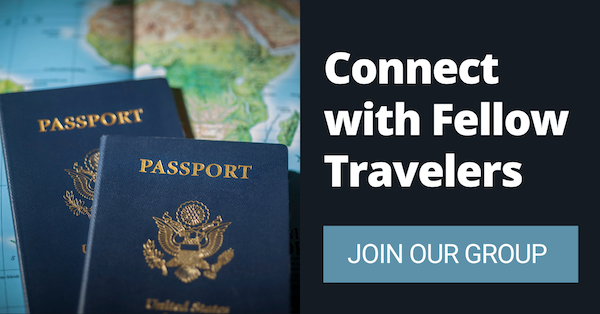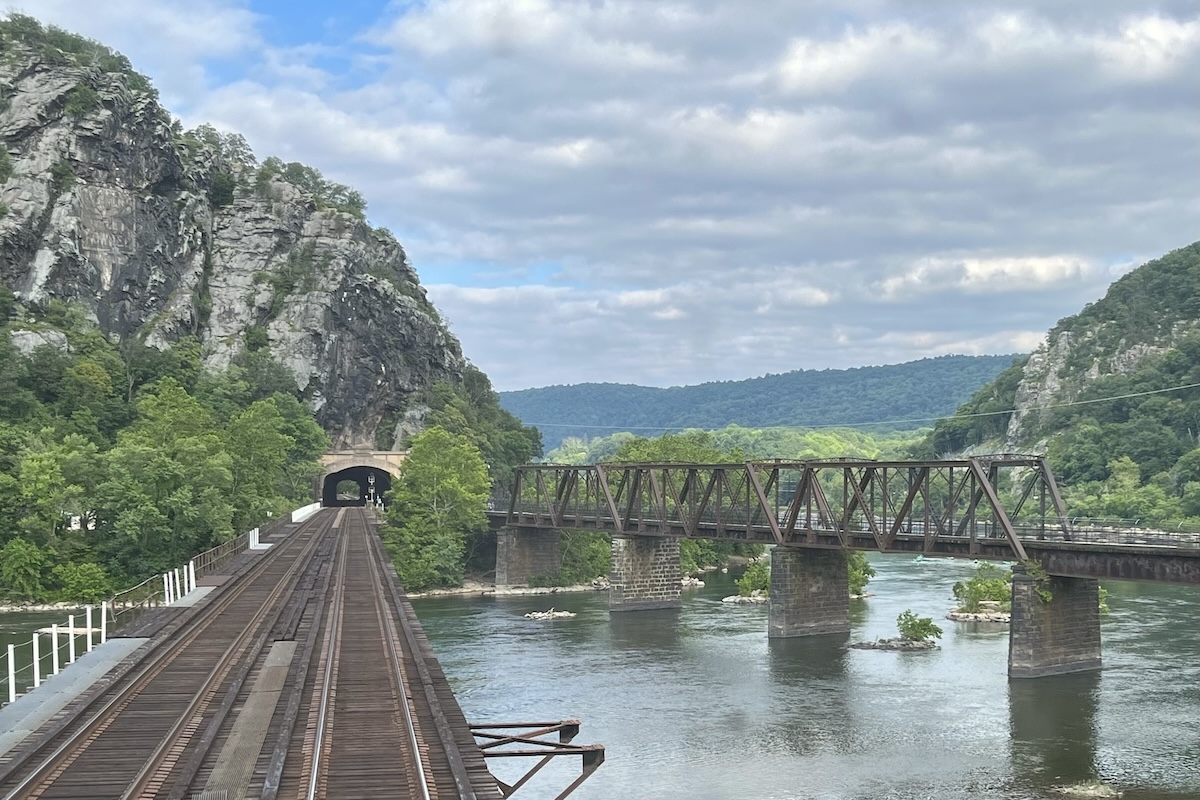
Riding Amtrak’s City of New Orleans: 3100 Miles Around DC, Chicago & the Big Easy
Skip to Section
In 1972, folk singer Arlo Guthrie scored with “City of New Orleans”—Steve Goodman’s elegiac farewell to the once-mighty Illinois Central train between Chicago and the Gulf of Mexico.
That fabled trip has seen some changes since Amtrak subsumed U.S. passenger service around the same time as Guthrie’s hit; yet despite its premature obituary, five decades later The City of New Orleans—Amtrak 58 & 59—still makes its daily run north and south through Illinois, Kentucky, Tennessee, Mississippi and Louisiana.
But if you want to ride, there’s that little matter of getting to and from Chicago or New Orleans.
Living in the Northeast, a friend and I designed a sort of “triangle trip” around No. 59:
Boarding the overnight Capitol from DC to Chicago, we would transfer next evening to the City of New Orleans (CONO for short). And then, after a night on that train and another at its terminus, we’d take Amtrak’s Crescent for a 28-hour return to Washington.
In five days, we covered 3100 miles through 15 states. As always, we learned much about America and its people—not to mention our national railroad.
Capitol from the Capital
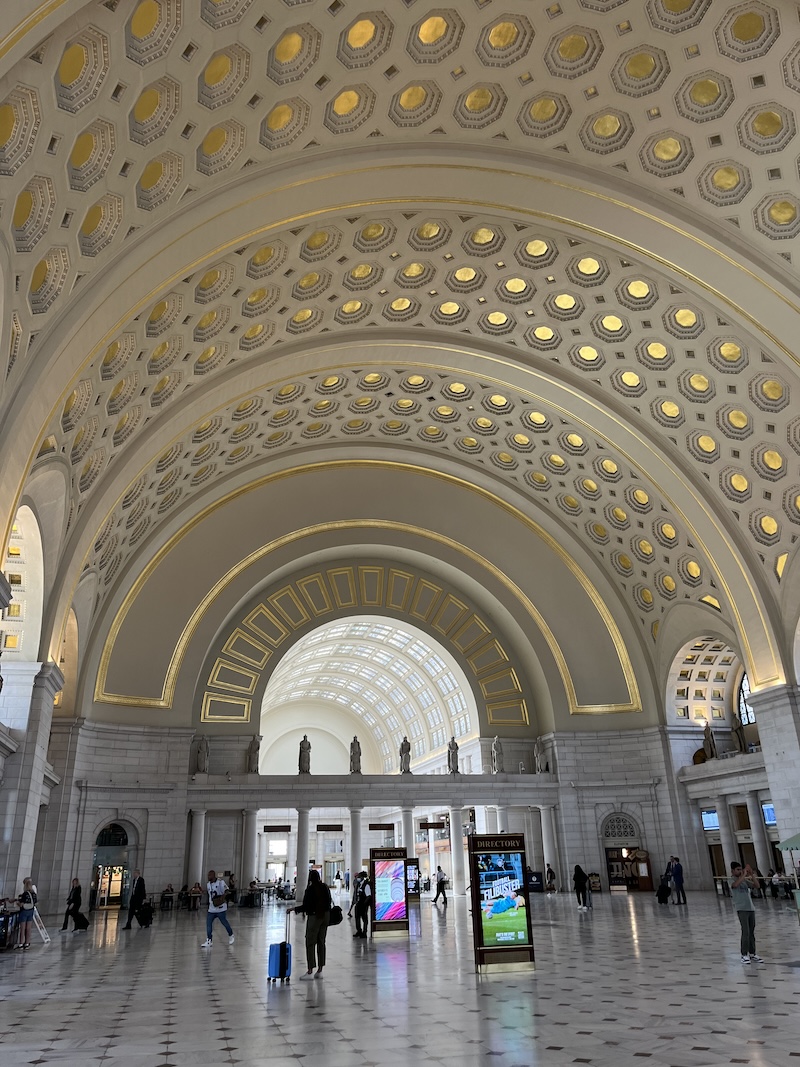
Vaulted ceiling over the concourse in Washington DC’s Union Station.
John and I met in DC for our first leg on Amtrak 29, which departs daily for the Windy City at 4:05 p.m.
The Capitol was late for boarding—but that allowed more time in Amtrak’s Metropolitan Lounge, which offers generous high-end refreshments and comfy couches for sleeping-car and first-class passengers. I also took a stroll around Washington’s impressive Union Station, which fields 200 trains a day—70,000 riders on Amtrak and local commuter rail.
Finally stepping out onto the platform after 4, we were thrilled to find Phil, our favorite Capitol attendant, welcoming us to our accommodations. And at this point, I ought to explain Amtrak’s sleeping-car arrangements:
Most of the line’s 14 overnight trains—including the Capitol—run with bi-level “Superliners.” Here you can ride “coach” in a roomy seat, or choose from three types of costlier private rooms: a deluxe (with its own toilet and shower); the roomette (a squeeze for two but great for singles); or a so-called “family bedroom,” which spans the full width of the car—nine feet by five, to be exact. (This is possible because the through corridor is on the upper level.)
By contrast, long-distance trains in and out of New York City—such as, for example, our Manhattan-bound Crescent—take a tunnel under the Hudson; so these carry single-level “Viewliner” cars, without the family room.
Preferring those, John and I had reserved one on both the Capitol and the CONO—but Amtrak commandeered the first of these for a bona fide family, giving us instead two roomettes across from each other.
This made for a quiet and relaxing trip, initiated with an ice-cold beer from my stuffed mini-cooler—something you cannot do in a plane or car.
Into the Wild
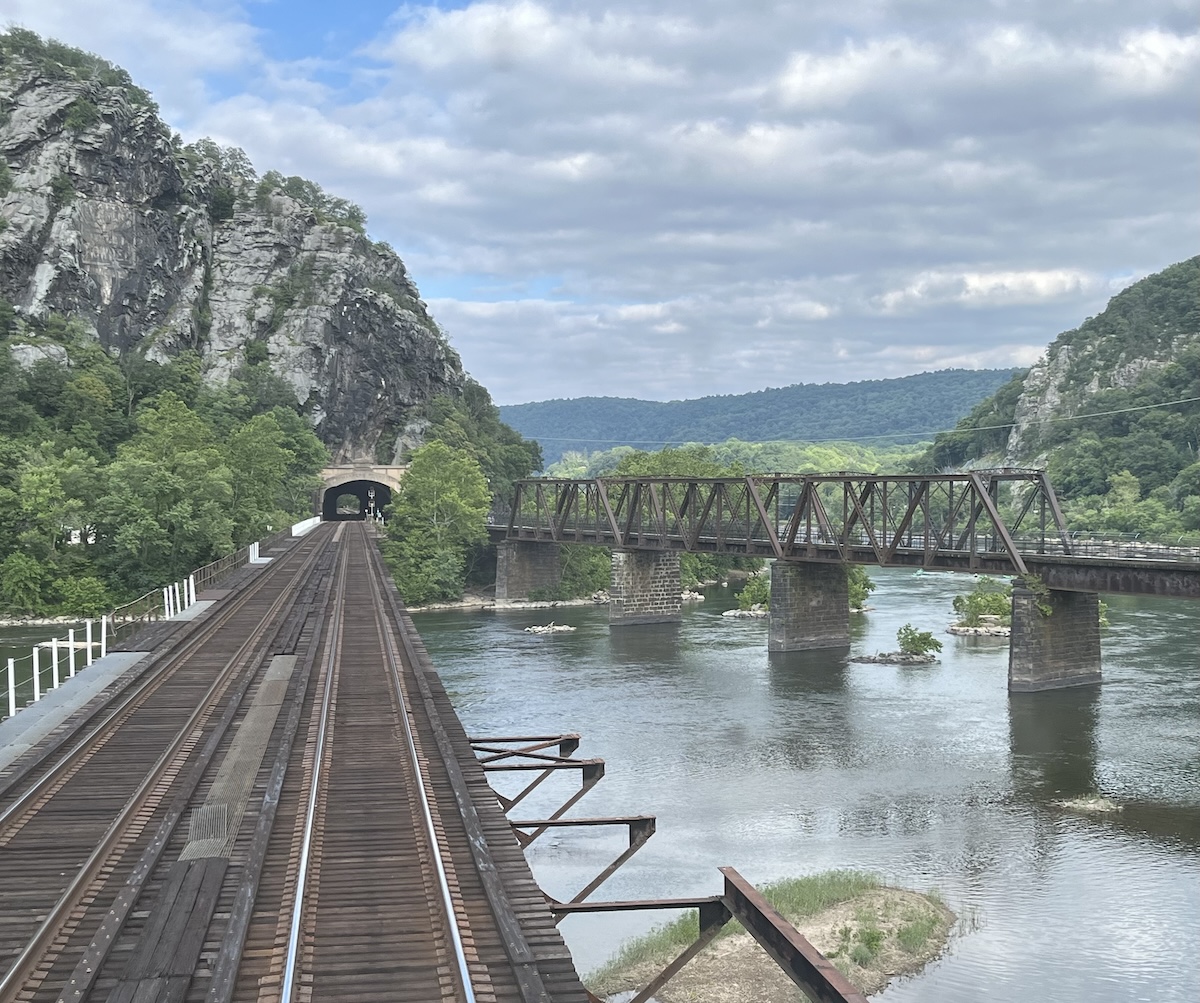
Cliff, tunnel and two bridges over the Potomac—seen from the back window of Amtrak’s Capitol Limited as it pulls into Harpers Ferry, WV. The span on the right carries a pedestrian walkway as well as freight trains.
Veteran travelers might well wonder why Amtrak needs 16 hours to reach Chicago from DC—a route you can drive in about 11. Leaving aside the fact that these trains reach the heart of downtown and thus avoid untold traffic woes, one factor is that Amtrak doesn’t own the tracks for most of its long-distance runs. For this reason, the railroad is subject to the vagaries of its freight-line hosts.
More important is the Capitol’s Appalachian terrain, necessitating a serpentine, tunnel-filled trek along the Potomac—plus countless cliffs, climbs and creeks in West Virginia and PA. For a massive steel train weighing roughly 700 tons (just a trifle heavier than your average auto), this is a route so hilly and twisty that between Rockville, MD, and Pittsburgh, the Capitol spends more than seven hours covering 283 miles.
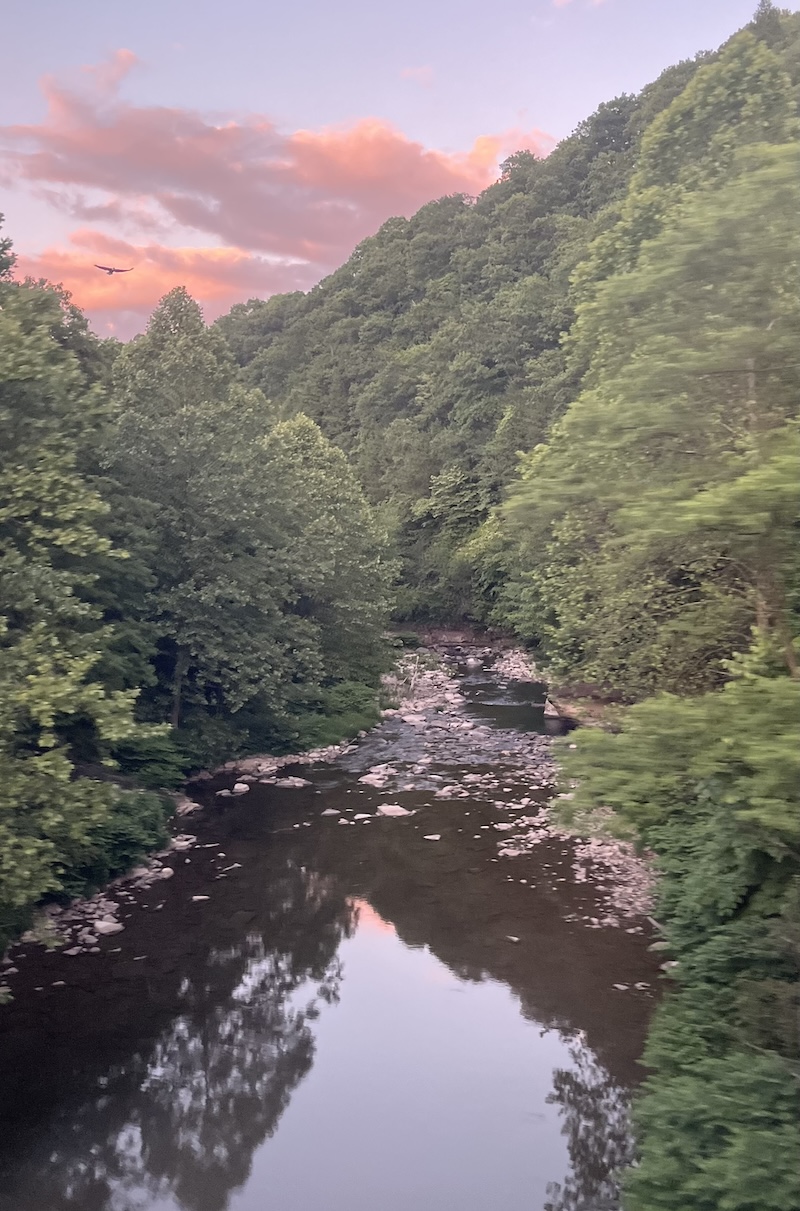
The author was working to photograph a sunset creek and somehow also captured a bald eagle in flight (upper left).
But the scenery is spectacular, including a vista of rocky bluffs, gaping tunnel and twin bridges into Harpers Ferry, WV—which I was able to photograph from the train’s back window. And then at sunset, I managed to snap one of many twilit streams slipping past; only later did I find that this shot also caught a bald eagle launching itself off a creek-side tree.
Overall on our three-train trip, wildlife sightings included hawks, egrets, turtles, whitetails, herons, a kestrel, several fish in streams and—a first for me—a six-foot on water-snake slithering across a placid river as we sailed past 30 feet overhead.
Flexible Dining
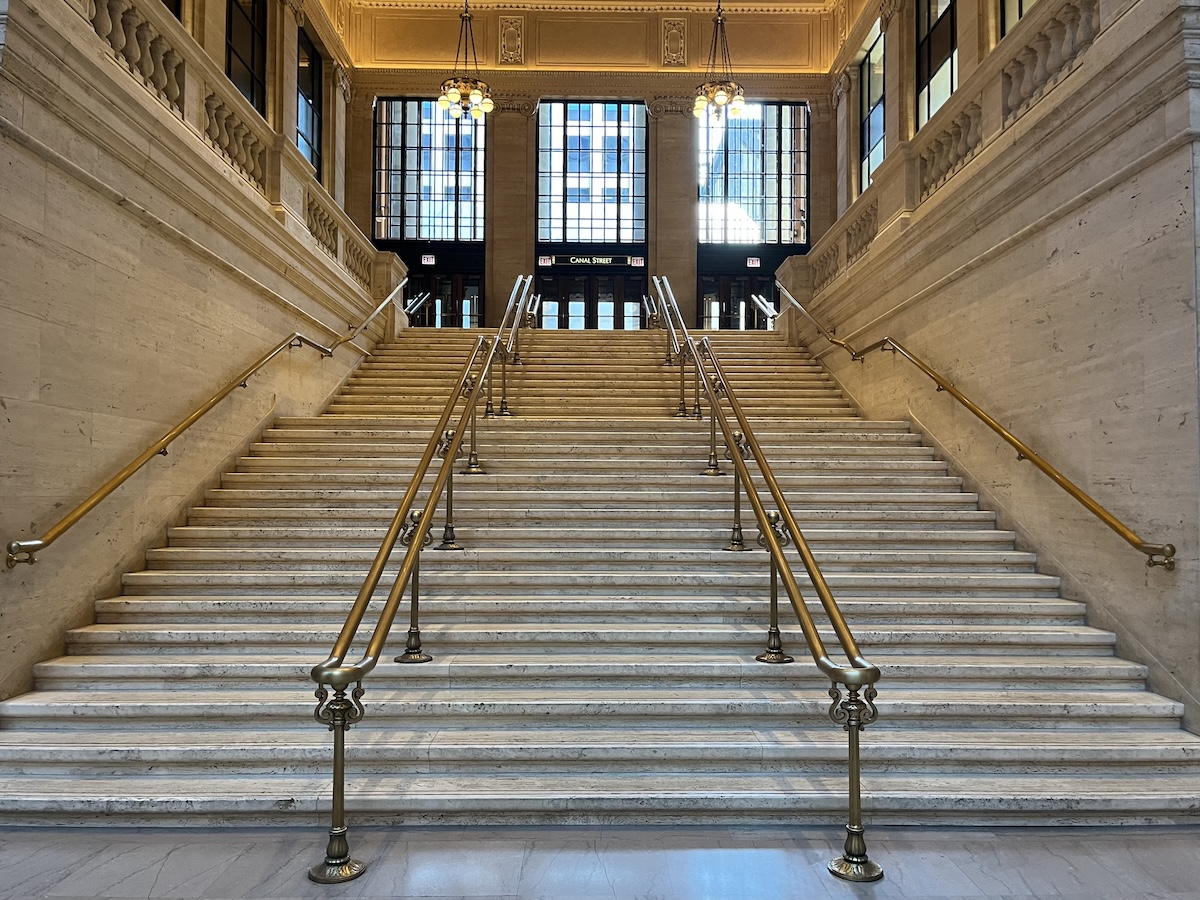
This staircase in Chicago’s Union Station still looks the same as it did in the famous baby-carriage shoot-out from 1987’s The Untouchables, starring Kevin Costner.
Though 29 left Washington half an hour late, we debarked 25 minutes early the next morning in Chicago. With a CONO departure that evening, we took a daytime room at a downtown hotel—in order to stretch out, use the pool and get a decent meal. But it turned out we didn’t need to have dinner.
Or maybe we did.
While meals are provided with every sleeper ticket, about five years ago Amtrak removed the dining car from all of its one-night trains (except the popular VA-to-FL Auto Train).
This was partly a cost-cutting measure, though the head office also claimed that privacy-loving millennials now preferred to eat in their rooms. In any case, the upshot was: no chef-cooked meals east of the Mississippi.
Most trains still have a café-lounge for light meals and snacks, which is generally patronized by regular coach-riders. Meanwhile, sleeping-car customers were reduced to “flexible dining”—an off-putting term for microwaved pre-mades that remain just a step above airline food. That’s what John and I had on 29, and they’re OK—especially if you eat in the lounge car, where you can spread out with one course at a time (beverage, salad, roll, entree, dessert, coffee).
Surprise, Surprise

The author’s friend stretches out for an afternoon siesta in a spacious family bedroom on Amtrak 59.
Happily, there is now some movement toward reinstating those Eastern diners (of which more later). But “flex” is what John and I expected on the CONO—and with our 8 p.m. departure plus a 4 p.m. next-day arrival, we assumed it would be just breakfast and lunch.
Our first surprise was that 59 does indeed serve dinner; and our second, that these are not multi-course flex meals, but simply a selection from the café lounge—which turned out to be almost inedible.
Despite our earlier meal, we sampled sandwiches (microwaved in sealed plastic) as the CONO backed carefully out of Chicago’s Union Station to reach the old Illinois Central main; but neither of us could finish more than a bite or two.
Though breakfast was fair, I chose to play it safe at lunch, thinking, “How badly can they screw up a hot dog?” This was supposed to be a rhetorical question—meaning I didn’t actually want to find out. Among other things, it too was nuked inside a plastic pouch—and what cook would commit this crime against a lowly hot-dog? Eating that bun was like chewing on one of my own socks—only with a little less flavor.
I’ve had café-lounge food before, and it’s usually good-not-great. I suspect what happened is that the two hardworking servers were simply overwhelmed; their tiny lower-lever snack-bar is intended for coach-riders, but here they were also serving dozens of multi-course dinners for folks in the CONO’s 30-odd bedrooms.
“All Along the Southbound Odyssey”
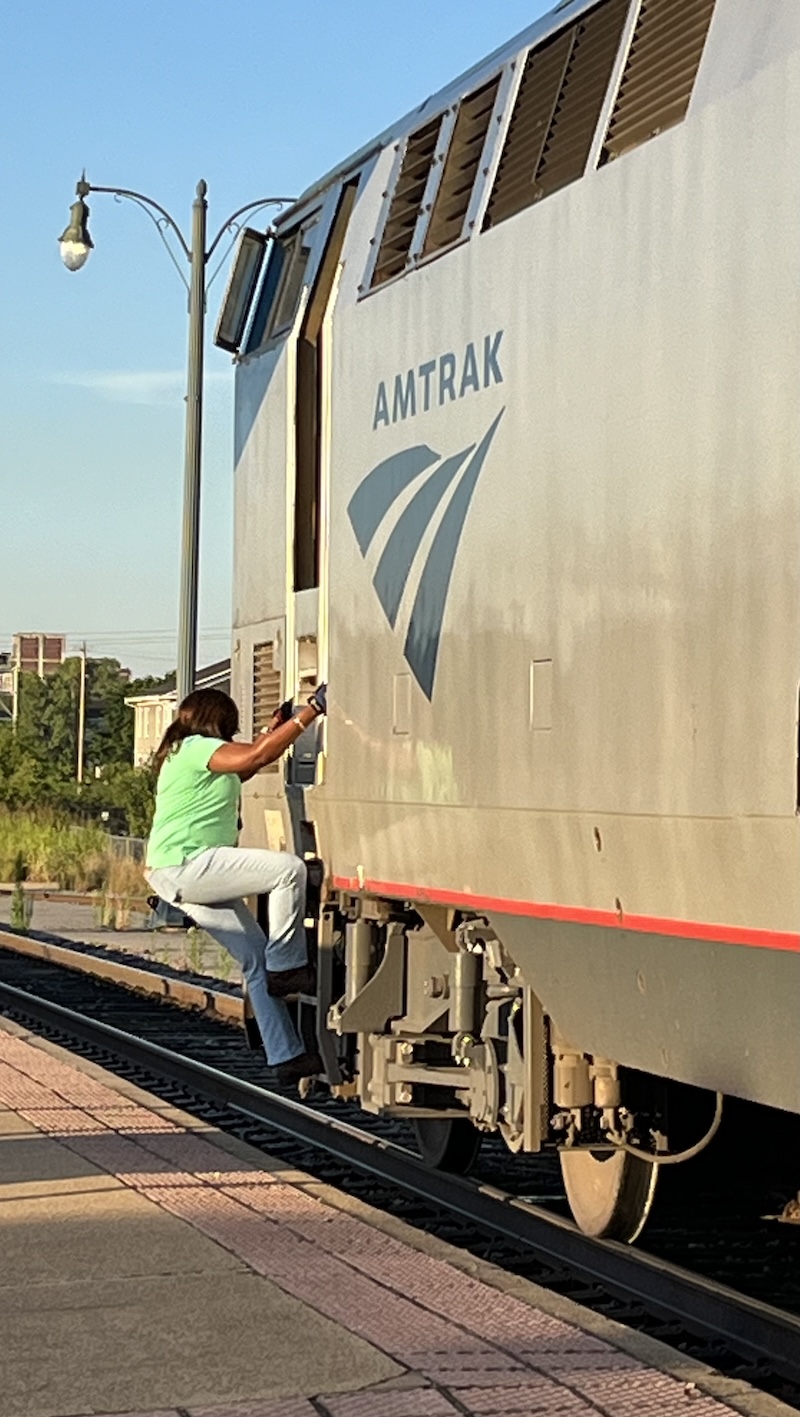
On a warm early morning in Memphis, a new engineer climbs aboard to start her shift on the City of New Orleans.
We had viewed the CONO as our centerpiece on this three-train trip, but actually it was the least interesting, scenery-wise. For one thing, while its route roughly follows the Mississippi, you can’t really see the river—except in the middle of the night near Cairo, IL, and briefly on the horizon in Memphis.
High points included several small airfields for crop-dusters, which we saw both in hangars and aloft—plus train-speeds that seemed to exceed the 79 mph limit (my app showed 85 in spots).
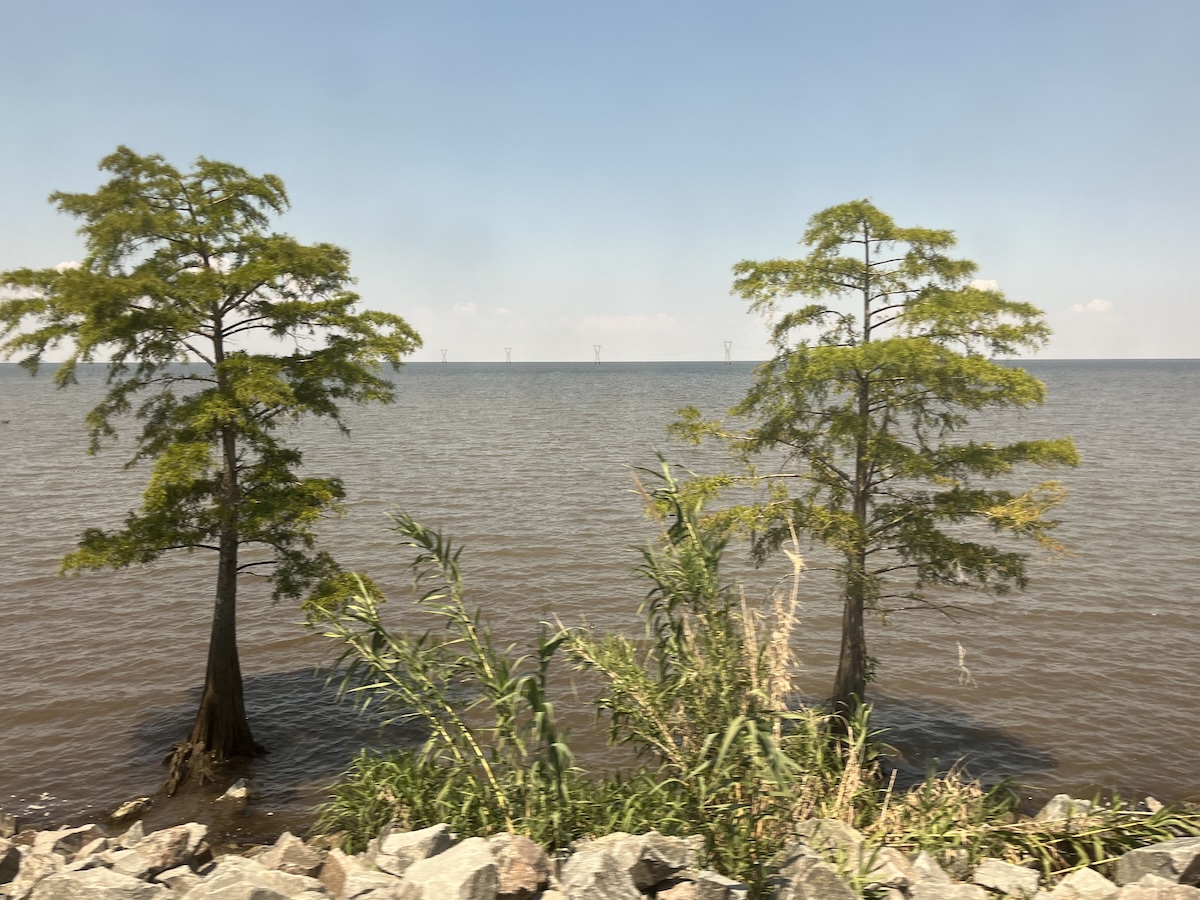
Lake Pontchartrain stretches to the horizon, flanked by two waterlogged trees as the Crescent rushes past on its last leg toward New Orleans.
And I relished stepping off the train at dawn in Memphis to loudly declaim (quoting Guthrie-Goodman), “Good morning, America!”—after which I strolled up the platform, where our engineer was climbing aboard to start her shift. And the final hour along Louisiana bayou and Lake Pontchartrain was quite nice too.
But we liked our third leg the best.
Heating Up
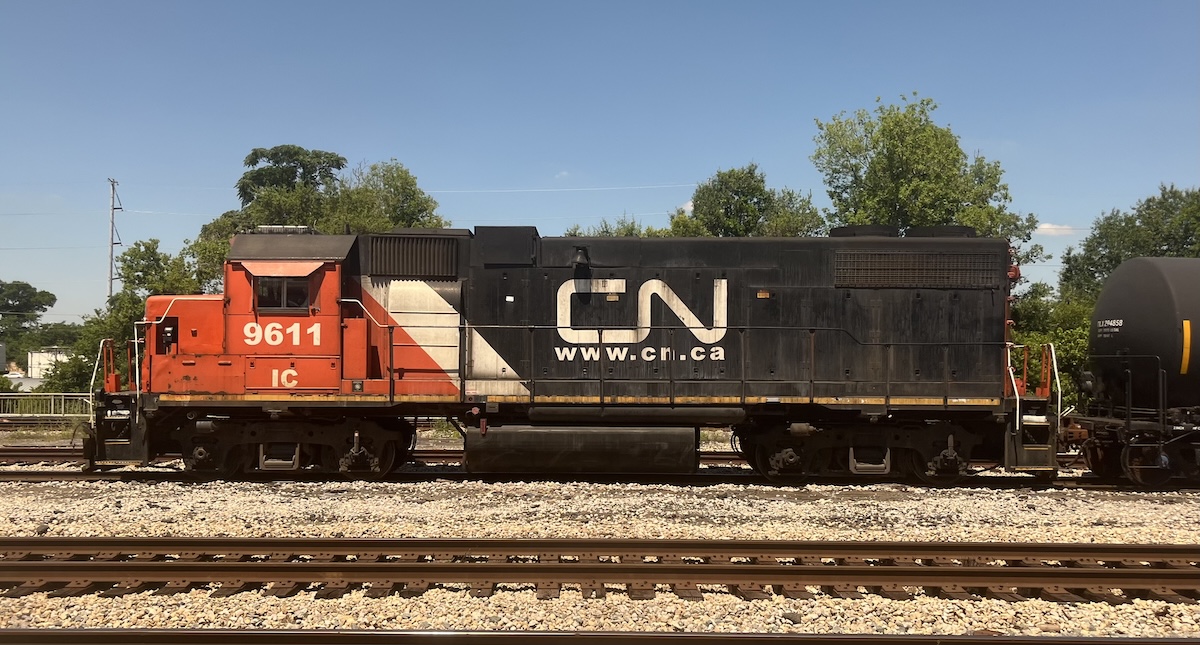
Canadian National freight diesel seen from the passing City of New Orleans. The CN serves as host railroad for Amtrak’s famed route between Chicago and the Gulf of Mexico.
With a daily 32-hour run between the Big Easy and the Big Apple, the Crescent marks another holdover from the golden age of American railroads—when (under different names) it served as flagship for the Southern Railway. That line’s freight operations are now part of Norfolk Southern, whose tracks we would borrow for most of this trip through Birmingham, Atlanta, Charlotte, Alexandria and points north.
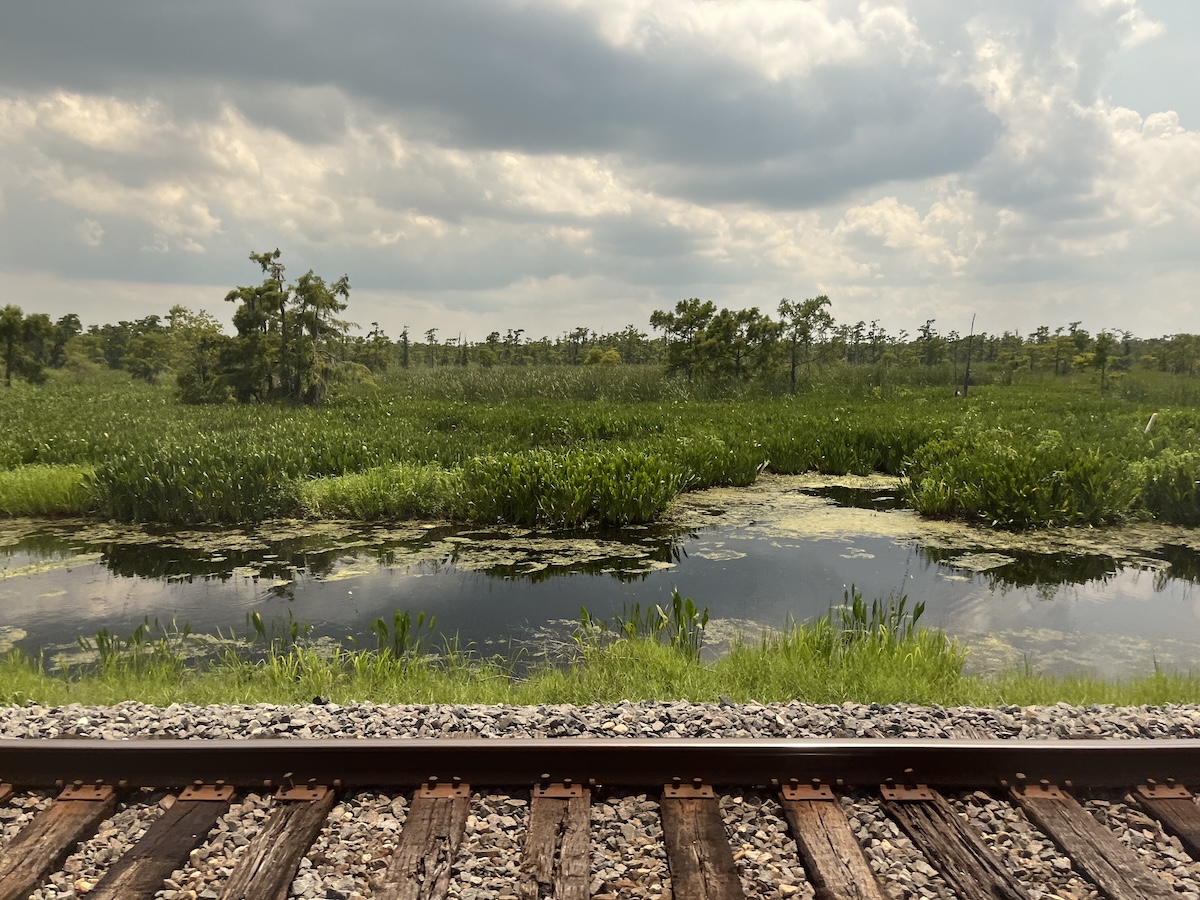
Louisiana bayou rolls along beside the City of New Orleans as that fabled train nears its final destination.
Our first treat was arriving at the station early to see Amtrak’s handsome Beech Grove by the platform. Named for the Indiana shop that manufactures most of the line’s rolling stock, Beech Grove is the special car for the line’s president and other execs, who would continue a tour of nearby routes by coupling onto the back of that day’s 58—the northbound City of New Orleans.
(As you may have noted, Amtrak’s named trains carry two numbers—one for each direction; odd numbers usually designate west- or south-bound.)
I desperately wanted to buttonhole the prexy and insist that he sample the CONO’s “cuisine”—but sadly, he was nowhere to be found.
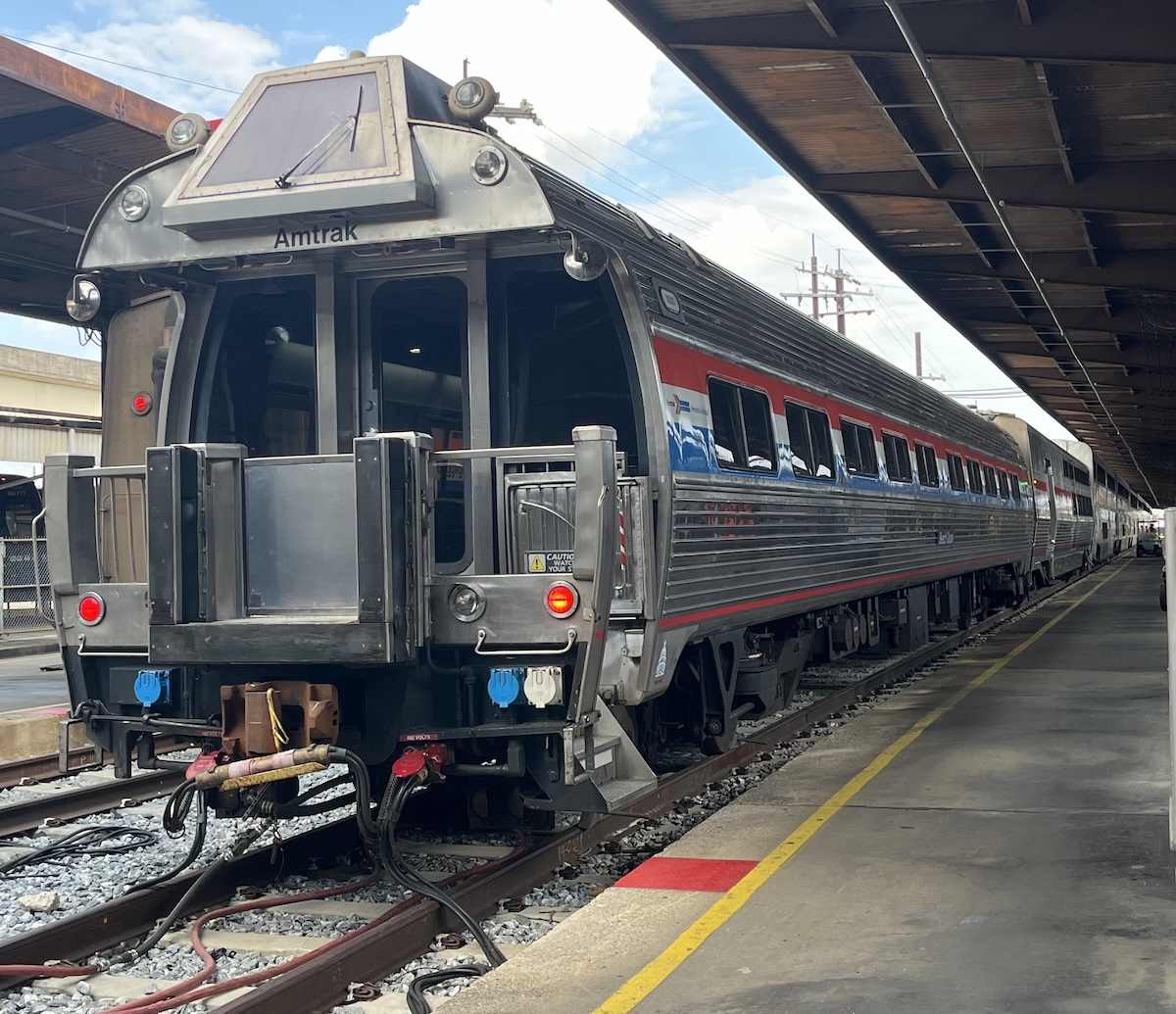
Amtrak’s Beech Grove, used by the line’s president and other officers, sits in New Orleans’ Union Passenger Terminal, waiting to head north for Chicago as part of Train No. 58.

One of New Orleans’ famed streetcars sets out on an early morning run downtown.
Instead, I took a walk and was able to photograph some of New Orleans’ famous streetcars—especially gratifying, since I hadn’t managed that during our brief overnight downtown.
Less thrilling was Louisiana’s mid-June climate—85 degrees at 8 a.m., which led not only to a curtailed stroll, but also to our lone glitch on this trip: Because overheated rails can be dangerous, Norfolk Southern had imposed a “heat restriction”—slower speeds that eventually saw us more than two hours late over much of our route.
Utterly Unplugged
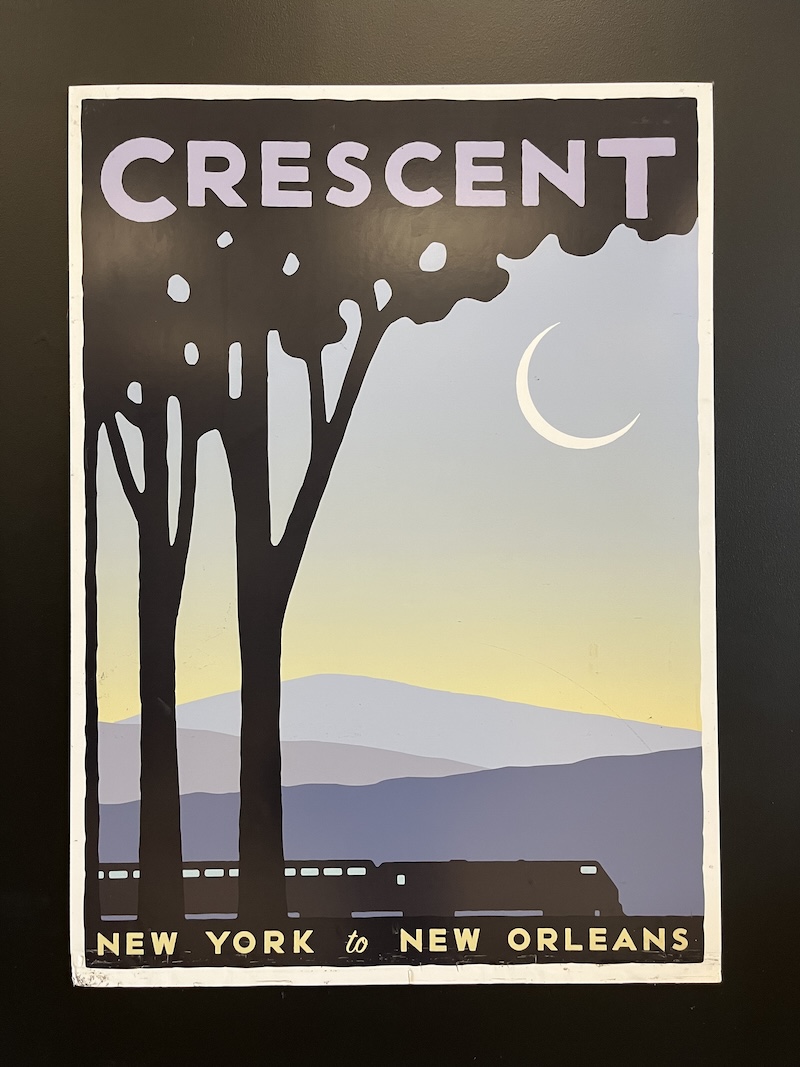
Poster for Amtrak Trains 19 & 20, the Crescent—a 32-hour run between the Big Easy and the Big Apple.
I’ve never managed to quite pin down what’s so profoundly relaxing about multi-day train travel. I suppose it’s a sense of actually going somewhere with no particular effort or responsibilities.
And someone else to cook.
Our five meals included breakfast right off the bat as we moved out across Lake Pontchartrain, part of which the Crescent crosses on a six-mile bridge—longest railroad span in the United States. As of June 2024, Nos. 19 & 20 have added an actual diner for sleeping-car passengers—which has also been done on the New York-Chicago Lake Shore Limited. It’s still “flex” meals, but they’re made to order and piping hot, served in this case by our cheerful and hard-working steward, Tobias.
(I should mention that Amtrak also recently restored actual chef-cooked diner meals on both of its New York-Miami trains; to some folks, this suggests an eventual system-wide return.)
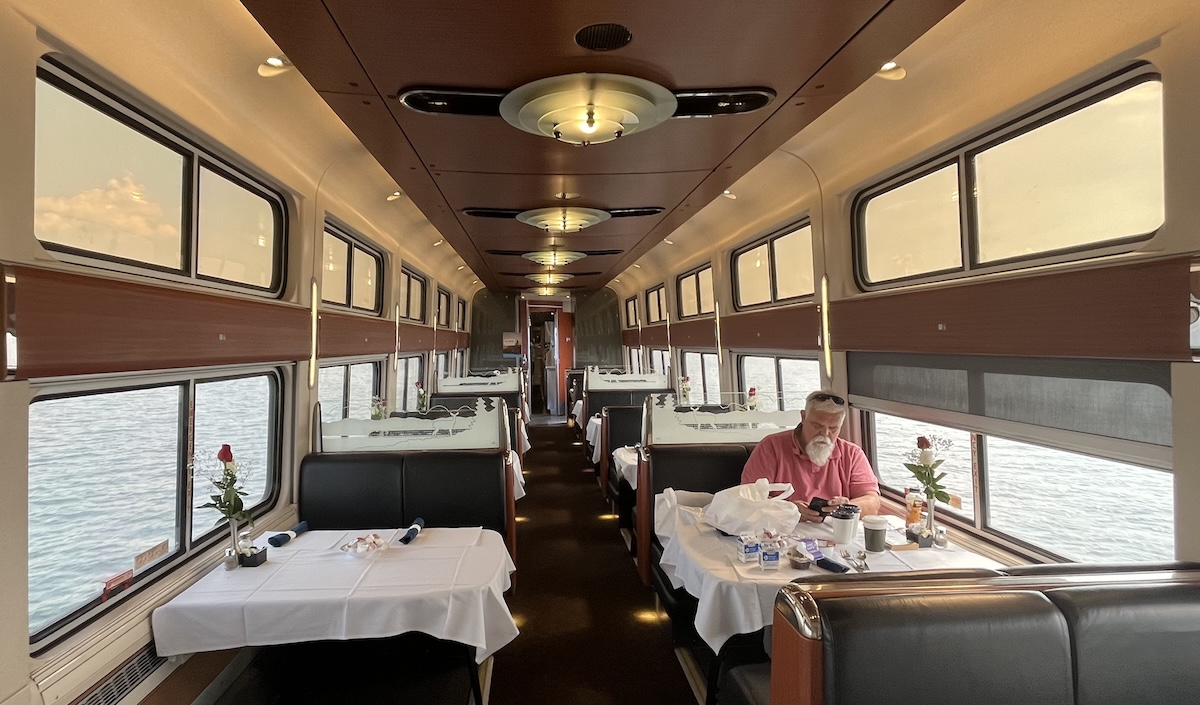
Breakfast in the dining car on Amtrak Train No. 20. Here the Crescent, having just pulled out of New Orleans, travels over a six-mile causeway crossing Lake Pontchartrain—which is visible on both sides of the car.
Between Crescent meals, I walked the train from end to end for nearly an hour; read a while to music; gazed out the back window at receding trackage; pulled down my upper berth for a nap (we again had adjoining roomettes); freshened up in our car’s very manageable shower; and fetched a bucket of ice from Tobias to chill the brews in my long-suffering cooler—which I had restocked in New Orleans.
Nothing like a Louisiana lager as endless forests, fields and fens fly past outside.
New Lease(s) on Life
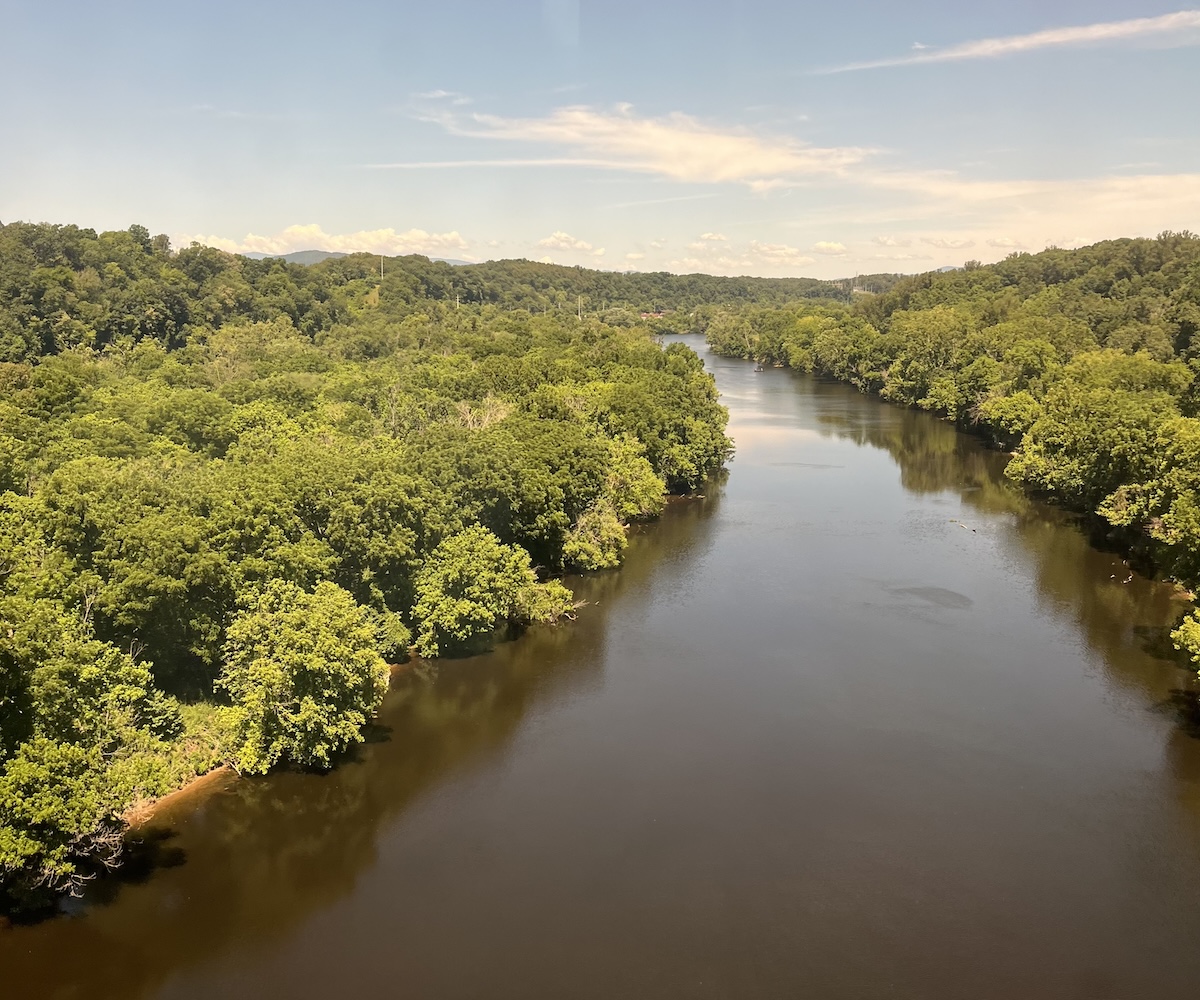
The Crescent crosses the James River just north of Lynchburg, VA.
And then there are the people!
On this trip we met Lee, a retiree from Birmingham who volunteered to explain what we could not help noticing—namely, that he was missing much of his left arm.
Working as a traffic engineer some years ago, Lee had been repairing a stoplight when his bucket-truck accidentally swung him into a live wire—jolting him with 13,000 volts.
For 10 long seconds.
Lee caught fire twice, and he showed us the scars to prove it. Having spent 197 days in a trauma burn center, this intrepid survivor credits Providence for preserving him through a crisis that could easily have killed him on the spot.
Earlier, my heart was warmed after chatting with a very young lady who had complimented my Pink Floyd shirt; total strangers and 50 years apart, she and I discussed the band in detail—even though she was born nearly four decades after Dark Side of the Moon.
And let’s not overlook our crew—unfailingly courteous, helpful and efficient. It’s no surprise that writer John Pitt, in his authoritative USA by Rail, calls the Crescent “Amtrak’s friendliest train.”
With the slower speeds, we were nearly three hours behind at Birmingham; yet somehow over the ensuing route, No. 20 kept gaining at every stop—so we wound up only 85 minutes late into DC. In contrast to the many long drives or flights I’ve taken to get home, I stepped off feeling utterly recharged.
If, like me, you wish more vacations could end that way—then next time, try the train.
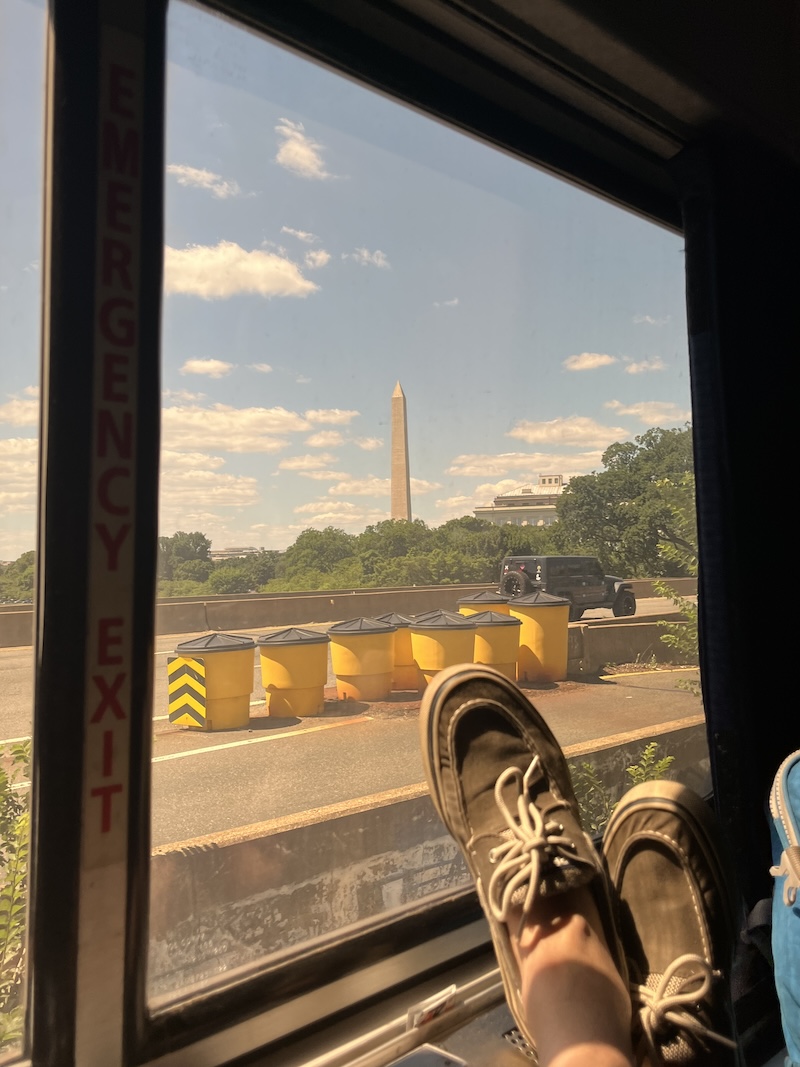
The author looks pretty relaxed at the end of a two-day rail trip, here nearing his terminus in DC—with the famed Washington monument visible from his sleeping-car bedroom.
About the Author
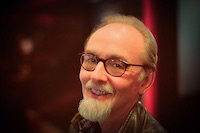 Joseph W. Smith III is a writer, teacher and speaker in Central PA. Published in several websites and periodicals, Joe has also penned books on Hitchcock, the Bible, church life and under-the-radar movies—along with a volume of Great Jokes and Riddles. He plays trumpet in a community band; reads 100 books a year; serves as officer in his local church; struggles to keep cheering for the Buffalo Bills; listens to music whenever not sleeping; and maintains a small collection of unused postcards. He can be reached at robbwhitefan@gmail.com.
Joseph W. Smith III is a writer, teacher and speaker in Central PA. Published in several websites and periodicals, Joe has also penned books on Hitchcock, the Bible, church life and under-the-radar movies—along with a volume of Great Jokes and Riddles. He plays trumpet in a community band; reads 100 books a year; serves as officer in his local church; struggles to keep cheering for the Buffalo Bills; listens to music whenever not sleeping; and maintains a small collection of unused postcards. He can be reached at robbwhitefan@gmail.com.All images courtesy of the author.
Information published on this website and across our networks can change over time. Stories and recommendations reflect the subjective opinions of our writers. You should consult multiple sources to ensure you have the most current, safe, and correct details for your own research and plans.
Frayed Passport is a participant in the Amazon Associates Program, an affiliate advertising program designed to provide a means for sites to earn advertising fees by advertising and linking to Amazon.com. We also may share links to other affiliates and sponsors in articles across our website.

